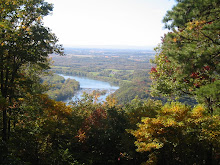I was walking my lab puppy, Bill, to Frick Park this morning when I realized the amount of plants I was staring out, wondering if they were morning glory, ragweed, or even a plant outside the weed family. I was extremely interested in which lawns seemed to be manicured, which ones had some corners of weeds or fences lined in crabgrass. After reading Nancy Gift’s A Weed By Any Other Name, I find myself genuinely interested in the plants that fill the backyard of my apartment building. Yesterday I was sitting out in the sun and I looked down to see what I thought could be prostrate spurge and joyed in the presence of morning glories lining the fence beside me. It made me feel good to know I was surrounded by some weeds, a sign that the land is healthy enough for insects and animals, and balanced enough to display diverse weeds.
The first thing I noticed when reading Gift's book was her organizational structure. Although an avid nature reader, I have only read a few books that are broken down by seasons. What I appreciate about Gift’s choice, however, is how within each season she breaks down the chapters by specific weeds that correlate with each season, a kind of year-long time line I could follow, while picturing the changing plants in my head, and seeing their cycles first-hand. (Looking back, I think I would have really loved an image, just a black and white sketch of each weed below its name so that I could classify them on my own when I stepped outside.) I particularly enjoyed how she ends each section, often on a very reflective and meaningful note that gave me glimpses into her emotions connected with weeds: “When I see our own morning glories each fall, I feel grateful to this plant, which volunteers its blooms as bright jewels on the cool mornings of the waning garden”(120).
The book is filled with a lot of scientific information, some I was immersed in while some I had a hard time understanding, as someone who has not studied weeds before. Although I found myself questioning certain processes or functions, I felt I gained an overall knowledge of weeds that I had not known before. I learned that “grafting” is a transplant of plant organs in order to mesh a healthy stem with a not so healthy or weak stem. I learned that dandelions could be used to make wine, although a long and tedious process. I learned that many weeds can be a red flag for severe soil problems down below, and I learned that moss grows at an incredibly slow rate. Most of all, though, I felt Gift’s biggest accomplishment was in combining years of plant studies with the life she led in an honest and refreshing tone. She admits hypocrisy when she douses poison ivy in Roundtop, and expresses her true feelings about disliking certain weeds. She reveals secrets of the world of weeds that would make any human being think twice about the next time they step into their own back yard.
As someone who has never had a problem with weeds, who has grown up playing in woods and poison ivy, I needed less convincing that “weeds aren’t the enemy” and more of an understanding of the role we(humans) have in their life cycle. And, Gift gave me that. I also believe she gives those not-so-open-minded homeowners a new light through which to see their gardens and their fields, a light that could bring organic warmth to the suburban yards "number one enemy."
Subscribe to:
Post Comments (Atom)

I'm wondering if there's anything at all in the approach that Gift took that might help you in the writing of your thesis, Libba. I know that you don't want to do a season-y organizational structure, but I think finding a structure like hers that focuses on physical things: plants, seasons, etc. might be helpful for you to think about for your own work. It keeps your grounded.
ReplyDelete